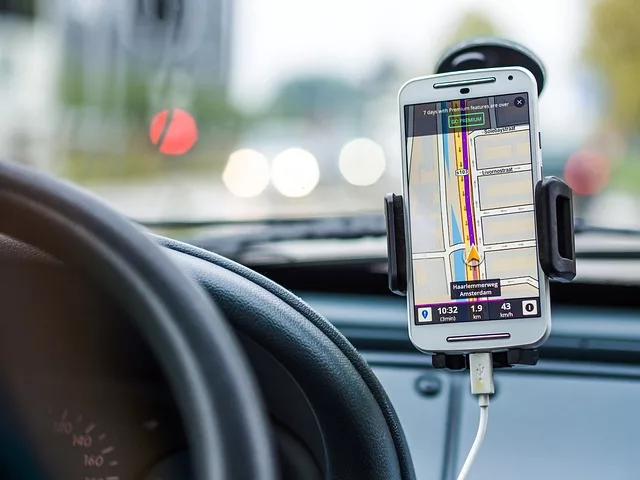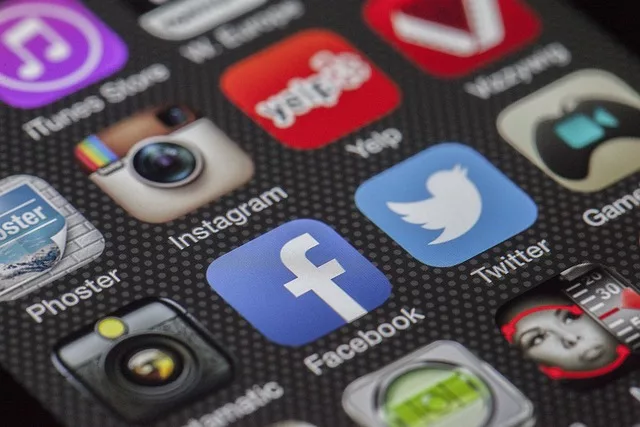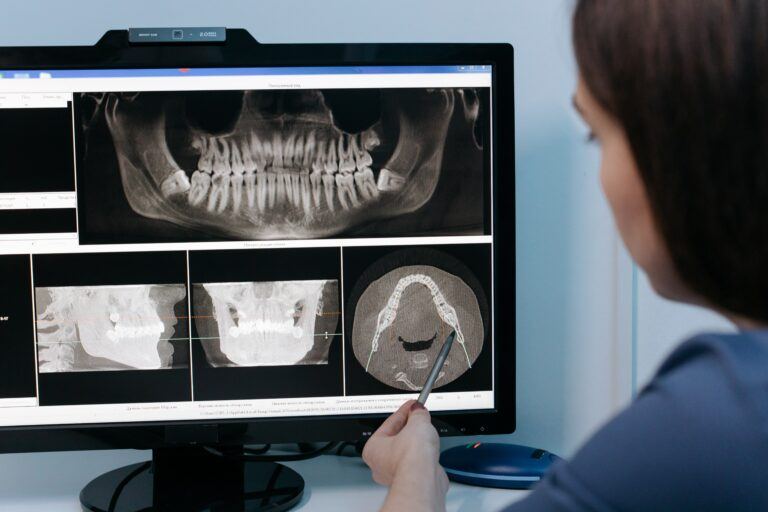7 Powerful Ways Cell Phone Evidence Aid Investigations
In criminal investigations, evidence is the cornerstone of uncovering the truth and bringing justice. Evidence, whether physical or digital, helps piece together the events of a crime, identify suspects, and support legal proceedings. Among the various types of evidence, cell phone evidence has become increasingly crucial in modern investigations.
Table of Contents
Role of Cell Phone Evidence in Investigations
Cell phones are widespread in today’s society, with almost everyone carrying one. The evidence plays a pivotal role in modern criminal investigations due to the detailed and personal information stored on these devices. Investigators can use this evidence to piece together crucial aspects of a crime, identify suspects, and build a strong case. Let’s explore the primary ways cell phone evidence is utilized in investigations:
Types of Cell Phone Evidence
Cell phones are reservoirs of diverse types of data, each playing a crucial role in criminal investigations. Understanding the various forms of cell phone evidence helps investigators build a comprehensive picture of a suspect’s actions, intentions, and connections.
1. Call Logs and Text Messages
- Call Logs: Call logs provide a record of incoming and outgoing calls, including the duration and time of each call. This information can establish who the suspect communicated with, revealing potential accomplices, victims, or witnesses.
- Text Messages: Text messages, including SMS and messaging app conversations, contain detailed communication records. They can provide insights into the suspect’s relationships, plans, and state of mind.
2. GPS and Location Tracking Data
- GPS Data: GPS data from cell phones can pinpoint a suspect’s exact location at specific times. This data is crucial for placing suspects at crime scenes or confirming alibis. It can also help track movements over time, revealing patterns that might link the suspect to multiple crimes.
- Cell Tower Data: When GPS data is unavailable, cell tower data can approximate a suspect’s location by identifying the cell towers their phone connected to. This data can provide a general location and movement pattern.

3. Social Media Activity
- Posts and Messages: Social media posts, comments, and private messages can provide a wealth of information. Suspects may reveal their whereabouts, plans, or state of mind through their social media activity. Friends and associates tagged in posts can also become persons of interest.
- Photos and Videos: Images and videos uploaded to social media can place suspects at specific locations and times. They can also provide visual evidence of the suspect’s activities, companions, and environment.
4. Photos and Videos
- Camera Roll: The photos and videos stored on a cell phone’s camera roll can be critical evidence. They can capture moments related to the crime, such as preparation, execution, or aftermath. Metadata associated with images and videos, such as timestamps and location data, can further corroborate other evidence.
- Downloaded Media: Media files downloaded from the internet or other devices can also provide insights into the suspect’s interests, plans, and actions.
5. App Usage and Data
- App Activity: Data from apps installed on a suspect’s phone can reveal a lot about their behavior and intentions. For example, navigation apps can track movements, while financial apps can provide records of transactions. Messaging apps often contain extensive communication histories.
- Search Histories: Search histories within apps, like web browsers or shopping apps, can indicate what the suspect was looking for or researching, providing clues about their intentions and plans.
Each type of cell phone evidence contributes a piece to the puzzle in criminal investigations. By analyzing call logs, text messages, GPS data, social media activity, photos, videos, and app usage, investigators can construct a detailed narrative of the suspect’s actions and intentions.
In the next section, we will discuss the methods used to collect cell phone evidence, emphasizing the legal and technical processes involved in accessing and preserving this critical data.
Methods of Collecting Cell Phone Evidence
Collecting cell phone evidence is a process that requires legal authorization, technical expertise, and adherence to proper protocols to ensure the integrity of the data. Investigators use various methods to access and preserve this crucial evidence.
1. Subpoenas and Warrants
- Legal Authorization: Before collecting cell phone evidence, investigators must obtain legal authorization through subpoenas or warrants. A subpoena can compel the production of documents, including cell phone records, while a warrant is required to search and seize a suspect’s cell phone.
- Probable Cause: To obtain a warrant, law enforcement must demonstrate probable cause to a judge, showing that the cell phone likely contains evidence related to a crime. This legal process ensures that the suspect’s privacy rights are respected.
2. Forensic Tools and Software
- Data Extraction: Forensic tools and software are used to extract data from cell phones. These tools can access call logs, text messages, GPS data, photos, videos, and app usage data, even if the data has been deleted. Popular forensic tools include Cellebrite, Oxygen Forensic Suite, and XRY.
- Data Preservation: Once data is extracted, it must be preserved in its original state to maintain its integrity. This involves creating forensic images or copies of the data, which can be analyzed without altering the original evidence.
3. Cooperation with Telecom Companies
- Requesting Records: Investigators can request cell phone records directly from telecom companies. These records include call logs, text message details, and cell tower data. Telecom companies are generally required to comply with subpoenas and warrants, providing the requested information.
- Challenges in Cooperation: While telecom companies cooperate with legal requests, challenges can arise, especially with encrypted data. Companies like Apple prioritize user privacy, which can limit the accessibility of certain types of data.
4. Handling Encrypted Devices
- Encryption Barriers: Encrypted devices pose significant challenges for law enforcement. Modern smartphones, particularly iPhones, use advanced encryption that makes accessing data without the user’s password extremely difficult.
- Decryption Efforts: Investigators may employ various decryption techniques, including brute force attacks or exploiting software vulnerabilities. However, these methods can be time-consuming and are not always successful.
5. Chain of Custody
- Maintaining Integrity: To ensure the admissibility of cell phone evidence in court, maintaining a clear chain of custody is crucial. This involves documenting every step of the evidence collection process, from seizure to analysis, to demonstrate that the evidence has not been tampered with.
- Proper Handling: Proper handling and storage of cell phone evidence are essential to prevent data corruption or loss. Investigators use Faraday bags to prevent remote access or tampering and ensure that all actions taken on the device are logged and documented.
6. Expert Testimony
- Forensic Experts: Forensic experts play a vital role in analyzing cell phone evidence and providing expert testimony in court. Their expertise helps explain the significance of the evidence, the methods used to collect it, and its relevance to the case.
- Cross-Examination: Forensic experts must be prepared to defend their findings under cross-examination, addressing any challenges to the validity or reliability of the evidence.
Collecting cell phone evidence is a complex process that balances legal, technical, and ethical considerations. By obtaining proper legal authorization, using advanced forensic tools, and maintaining a clear chain of custody, investigators can ensure that cell phone evidence is reliable and admissible in court.
In the next section, we will explore the legal challenges and privacy issues associated with cell phone evidence, highlighting the need for a balance between law enforcement needs and individual rights.
Legal Challenges and Privacy Issues
The collection and use of cell phone evidence in criminal investigations raise significant legal challenges and privacy issues. Balancing the needs of law enforcement with the protection of individual privacy rights is a complex and ongoing struggle.

1. Need for Subpoenas and Warrants
- Legal Framework: To access cell phone data, law enforcement agencies must follow legal protocols, obtaining subpoenas or warrants. These legal instruments ensure that the search and seizure of cell phone data are justified and conducted within the bounds of the law.
- Probable Cause Requirement: Warrants require law enforcement to demonstrate probable cause, showing that the cell phone likely contains evidence of a crime. This requirement protects individuals from arbitrary searches and ensures that their privacy is not violated without due cause.
2. Privacy Concerns and Legal Protections
- Fourth Amendment Protections: In the United States, the Fourth Amendment protects individuals from unreasonable searches and seizures. This protection extends to digital data on cell phones, requiring law enforcement to obtain a warrant before accessing private information.
- Global Privacy Laws: Privacy protections vary globally, with different countries imposing various legal requirements for accessing cell phone data. Investigators must navigate these legal landscapes, respecting the privacy rights of individuals while pursuing criminal investigations.
- Impact on Investigations: Privacy laws and the need for legal authorization can delay investigations, making it challenging to access crucial evidence quickly. However, these protections are essential to prevent abuse and ensure that investigations respect individual rights.

3. Encryption and Data Access Challenges
- Encrypted Devices: Modern smartphones, especially iPhones, use advanced encryption to protect user data. This encryption poses significant challenges for law enforcement, as it prevents access to data without the user’s password or cooperation.
- Apple’s Stance on Privacy: Companies like Apple prioritize user privacy and security, often refusing to create backdoors or provide decryption keys to law enforcement. This stance has led to high-profile legal battles and debates over the balance between privacy and security.
- High-Profile Cases: Notable cases, such as the San Bernardino terrorist attack in 2015, highlight the struggle between law enforcement and tech companies. In this case, the FBI sought Apple’s help to unlock an iPhone, leading to a legal standoff and public debate over encryption and privacy.
4. Balancing Law Enforcement Needs and Individual Rights
- Ethical Considerations: Investigators must balance their duty to solve crimes and protect public safety with the need to respect individual privacy rights. Ethical considerations play a crucial role in guiding these decisions, ensuring that investigations are conducted fairly and justly.
- Public Trust: Maintaining public trust is essential for law enforcement agencies. Transparency in the use of cell phone evidence and adherence to legal and ethical standards help build and maintain this trust.
- Future Legal Frameworks: The evolving nature of technology and privacy concerns may lead to changes in legal frameworks. Policymakers must address the challenges posed by encryption and digital privacy, creating laws that balance the needs of law enforcement with the protection of individual rights.
5. The Role of Courts and Legislation
- Judicial Oversight: Courts play a crucial role in overseeing the use of cell phone evidence, ensuring that warrants are justified and that evidence is collected lawfully. Judicial oversight helps prevent abuses and protects individual rights.
- Legislative Actions: Legislatures may introduce laws to address the challenges of digital evidence collection, providing clear guidelines for law enforcement and protecting privacy rights. These laws must adapt to technological advancements and the changing landscape of digital privacy.
In the next section, we will dive into the struggle with encrypted devices, examining the technical and ethical implications of accessing encrypted data in criminal investigations.
Apple’s Stance on Privacy and Encryption
- User Privacy and Security: Apple has consistently prioritized user privacy and security, implementing strong encryption protocols that even the company itself cannot bypass. This commitment to privacy is part of Apple’s broader stance on protecting user data from unauthorized access.
- Refusal to Create Backdoors: Apple has refused to create backdoors or provide decryption keys to law enforcement, citing the potential for abuse and the risk to overall security. A backdoor created for law enforcement could be exploited by hackers, putting all users at risk.
1. Technological and Ethical Implications
- Brute Force Attacks: One method to bypass encryption is through brute force attacks, where multiple password combinations are tried until the correct one is found. However, this method is time-consuming and often impractical due to the vast number of possible combinations and built-in security features that limit attempts.
- Exploiting Vulnerabilities: Investigators may seek to exploit software vulnerabilities to gain access to encrypted data. While this can be effective, it also raises ethical concerns about the use of undisclosed security flaws and the potential for misuse by malicious actors.
- Ethical Considerations: The ethical implications of bypassing encryption are significant. On one hand, accessing encrypted data can provide crucial evidence to solve crimes and protect public safety. On the other hand, weakening encryption undermines the privacy and security of all users, potentially exposing them to cyber threats.
2. The Role of Legislation and Policy
- Proposed Legislation: Governments have proposed various legislative measures to address the issue of encryption. Some proposals call for mandatory backdoors for law enforcement, while others seek to balance privacy and security through oversight and regulation.
- Global Perspectives: Different countries have taken varying approaches to encryption and law enforcement access. While some advocate for stronger privacy protections, others prioritize national security and investigative capabilities.
3. Collaboration and Innovation
- Public-Private Partnerships: Collaboration between law enforcement and technology companies is crucial. Developing secure methods for accessing data while protecting user privacy requires innovative solutions and cooperation.
- Future Technologies: Advances in technology may offer new ways to balance the needs of law enforcement with the protection of individual privacy. Ongoing research and development in cybersecurity and digital forensics will play a key role in shaping the future of encrypted data access.
4. High-Profile Cases and Public Perception
- Public Scrutiny: High-profile cases involving telecom companies and law enforcement often draw significant public scrutiny. These cases highlight the tensions between privacy and security and influence public perception of both telecom companies and law enforcement practices.
- Transparency and Accountability: Transparency in how data requests are handled is crucial for maintaining public trust. Telecom companies and law enforcement agencies must be accountable for their actions, ensuring that data collection practices are lawful and ethical.
In conclusion, the struggle with encrypted devices represents a complex and evolving challenge for law enforcement. While encryption protects user privacy and security, it also complicates criminal investigations. Balancing these competing interests requires careful consideration of technological, legal, and ethical factors. As technology continues to advance, finding solutions that respect individual rights while enabling effective law enforcement will remain a critical issue.
Digital Phones vs. Analog Phones in Investigations
The evolution from analog to digital phones has brought significant changes to how evidence is collected and analyzed in criminal investigations. Understanding the differences between these technologies is crucial for investigators to effectively use phone data in solving crimes.
1. Characteristics of Analog Phones
- Technology: Analog phones use analog signals to transmit voice data over telephone lines. They rely on analog circuitry and are less sophisticated compared to digital phones.
- Data Capabilities: Analog phones primarily handle voice communication and lack the advanced data storage capabilities of digital phones. They do not store text messages, call logs, or multimedia files.
- Evidence Collection: Investigators can access call records and location information from analog phones, but the data available is limited to call details and the phone’s connection to cell towers. Detailed digital evidence such as text messages or application usage is not available.
2. Characteristics of Digital Phones
- Technology: Digital phones use digital signals to transmit data. They include a range of features such as internet connectivity, text messaging, email, and multimedia capabilities.
- Data Capabilities: Digital phones store a wealth of information, including text messages, emails, call logs, photos, videos, app data, and location data. This extensive data can provide a comprehensive view of a suspect’s activities and communications.
- Evidence Collection: Digital phones offer a richer source of evidence. Investigators can extract detailed records of communications, multimedia files, and location history. Accessing this data often requires specialized forensic tools and techniques.

Case Studies and Real-Life Examples
Cell phone evidence has proven to be a pivotal factor in numerous high-profile criminal cases. These case studies illustrate how critical cell phone data can influence the outcomes of investigations and prosecutions. Here, we explore notable cases, their outcomes, and the lessons learned.
1. The Case of Scott Peterson
- Overview: In 2002, Scott Peterson was charged with the murder of his pregnant wife, Laci Peterson. Cell phone evidence played a significant role in the investigation.
- Cell Phone Evidence: Investigators used cell phone records to track Scott’s movements and establish his whereabouts on the day of Laci’s disappearance. His cell phone data showed he was near the San Francisco Bay, where Laci’s body was eventually found.
- Outcome: The cell phone evidence helped corroborate other evidence against Scott, leading to his conviction for first-degree murder in 2004.
- Lesson Learned: Cell phone location data can be crucial in placing a suspect at or near a crime scene, strengthening the overall case.
2. The Case of Aaron Hernandez
- Overview: Former NFL player Aaron Hernandez was convicted of the murder of Odin Lloyd in 2013. Cell phone evidence was instrumental in the investigation and trial.
- Cell Phone Evidence: Prosecutors used cell phone records to link Hernandez to the crime scene. Text messages between Hernandez and Lloyd, as well as GPS data from Hernandez’s phone, helped establish a timeline and his involvement in the crime.
- Outcome: The cell phone evidence contributed to Hernandez’s conviction for first-degree murder in 2015.
- Lesson Learned: Text messages and GPS data from cell phones can provide direct links between suspects and victims, as well as crucial timeline information.
3. The Case of the Golden State Killer
- Overview: The Golden State Killer, responsible for numerous murders and assaults in the 1970s and 1980s, was identified as Joseph James DeAngelo in 2018. While DNA evidence was the primary factor, cell phone evidence also played a role.
- Cell Phone Evidence: Investigators used cell phone records to track DeAngelo’s movements and establish connections between him and various crime scenes.
- Outcome: The cell phone evidence, along with DNA and other investigative work, led to DeAngelo’s arrest and conviction.
- Lesson Learned: Cell phone evidence can complement other types of evidence, such as DNA, to build a strong case against suspects in complex investigations.
4. The Case of George Zimmerman
- Overview: In the 2012 shooting of Trayvon Martin by George Zimmerman, cell phone evidence played a role in understanding the events leading up to the incident.
- Cell Phone Evidence: Text messages and phone calls between Martin and his friend Rachel Jeantel provided insights into Martin’s actions and state of mind before the shooting. Zimmerman’s calls to police also helped establish a timeline.
- Outcome: Zimmerman was acquitted, but the cell phone evidence contributed to the narrative and public understanding of the case.
- Lesson Learned: Cell phone evidence can provide valuable context and insights into the events surrounding a crime, even if it does not directly lead to a conviction.
In conclusion, cell phone evidence has proven to be invaluable in various high-profile cases, influencing the outcomes of investigations and trials. These case studies highlight the importance of accurate data analysis, the potential impact of cell phone evidence on criminal justice, and the lessons learned about its use and limitations.
In the next section, we will examine the future of cell phone evidence in criminal investigations, discussing emerging technologies and potential developments that could shape the landscape of digital forensics.
The Future of Cell Phone Evidence in Criminal Investigations
The field of digital forensics, particularly regarding cell phone evidence, is rapidly evolving. Emerging technologies and advancements in data analysis are reshaping how evidence is collected, interpreted, and used in criminal investigations. This section explores the future of cell phone evidence, including new technologies, trends, and potential developments.
1. Advances in Digital Forensics Technology
- Enhanced Data Extraction Tools: New forensic tools are continually being developed to extract and analyze data from cell phones more efficiently. These tools are capable of accessing deeper layers of data, including encrypted information and data from applications.
- Artificial Intelligence and Machine Learning: AI and machine learning algorithms are increasingly being integrated into digital forensics. These technologies can automate data analysis, identify patterns, and predict trends based on large datasets, improving the speed and accuracy of investigations.
- Cloud Data Access: As more data is stored in the cloud, accessing cloud-based backups and synchronization data is becoming a critical aspect of digital investigations. Tools and methods are evolving to capture and analyze data from cloud services.
2. Privacy and Security Concerns
- Balancing Privacy and Access: As technology advances, the balance between privacy and law enforcement access becomes more challenging. New tools that provide deeper access to personal data must be carefully regulated to protect individual privacy rights.
- Data Protection Regulations: Stringent data protection regulations, such as the General Data Protection Regulation (GDPR) in Europe, influence how data can be accessed and used. These regulations require compliance to ensure that privacy is maintained while pursuing investigations.
- Ethical Considerations: Ethical considerations regarding data access and usage will continue to evolve. Ensuring that new technologies are used responsibly and that privacy concerns are addressed will be crucial for maintaining public trust.
3. Emerging Trends in Cell Phone Evidence
- Wearable Technology: The rise of wearable technology, such as smartwatches and fitness trackers, adds new dimensions to digital evidence. Data from these devices can provide additional insights into a suspect’s activities and location.
- Internet of Things (IoT): The growing number of connected devices in the Internet of Things (IoT) creates new opportunities and challenges for evidence collection. Investigators may need to analyze data from a variety of smart devices in addition to cell phones.
- Biometric Data: As biometric authentication becomes more common, data related to fingerprints, facial recognition, and voice recognition may become relevant in investigations. Analyzing this data can provide additional evidence or corroborate other findings.
Conclusion
Cell phone evidence has become a cornerstone of modern criminal investigations, offering valuable insights into suspects’ activities, communications, and locations. From tracking movements to analyzing call logs and text messages, cell phones provide critical data that can significantly impact the outcomes of criminal cases.
Despite its importance, the use of cell phone evidence is accompanied by challenges, including privacy concerns, encryption barriers, and the need for legal authorization. As technology evolves, so too must the methods and regulations governing digital evidence. Law enforcement must balance effective evidence collection with the protection of individual privacy rights for maintaining public trust and achieving justice.
I trust you found this article informative. Please feel free to leave comments or questions below. Be sure to check out my upcoming articles about How Investigators Expose Staged Crime Scenes and 5 Powerful Ways Forensic Genealogy Aids Modern CSI.
Additionally, visit my other website for insights on women’s safety across various situations.
W. McCain






